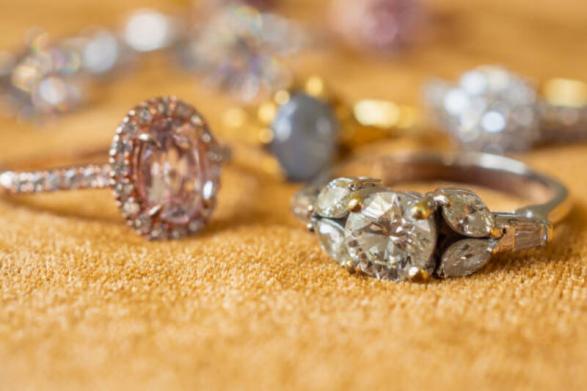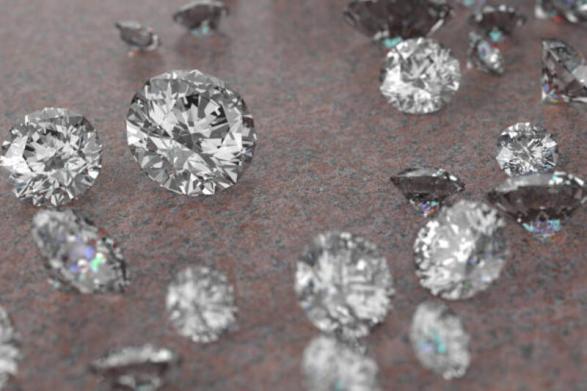Exploring the Waning Allure of Diamonds in Modern Society
Dec 17, 2023 By Susan Kelly
Once considered the ultimate symbol of wealth and status, diamonds are gradually losing their sparkle in contemporary society. As consumer values shift towards sustainability and ethics, the diamond industry's environmental impact and questionable labour practices are coming under scrutiny. Furthermore, the rise of lab-grown diamonds, offering similar aesthetic appeal at a fraction of the cost, has disrupted the traditional monopoly. This document explores these multiple factors contributing to the diminishing allure of diamonds in today's world.
Historical Significance of Diamonds:

Diamonds have held historical and cultural significance for many centuries. Originating from India, they were prized for their hardness and natural brilliance, and used as engraving tools as well as decorative items. In the middle ages, diamonds were considered valuable for their healing properties. But it was in the late 19th century, with the discovery of diamond mines in South Africa and the clever marketing strategies of De Beers - "A diamond is forever" - that they became synonymous with love, commitment, and wealth. This historical significance, coupled with their perceived rarity, elevated diamonds to a status symbol among societies worldwide. However, this lustre has begun to dull as modern society increasingly values sustainability, ethical sourcing, and cost-effectiveness.
Changing Consumer Values: Towards Sustainability and Ethics:
In the 21st century, consumers have progressively become more conscious about the origin and ethical implications of their purchases. The diamond industry, marred by controversies such as "blood diamonds" and substantial environmental degradation, has come under the spotlight. Mining operations often lead to habitat destruction, soil erosion, and significant carbon footprints. Simultaneously, the industry faces criticism over labor practices, with accusations of poor working conditions and exploitation.
This ethical awakening and shift towards sustainability have pushed many consumers towards alternatives — specifically, lab-grown diamonds. These diamonds, identical to their naturally occurring counterparts, are created in a controlled environment, eliminating the ethical and environmental issues associated with traditional diamond mining.
Child Labor in Diamond Mining:
According to a report by Human Rights Watch, approximately one million children are engaged in mining activities worldwide, with a significant number involved in diamond mining. These young individuals endure perilous working conditions and are deprived of their right to education. As consumer awareness grows regarding the human toll of diamond production, there is an increasing preference for ethically sourced alternatives that ensure fair labor practices.
Exploitative Working Conditions:
In addition to child labor, diamond mining has also been associated with exploitative working conditions for adult miners. These conditions encompass long hours of work, inadequate safety measures, and insufficient compensation. To tackle these issues and curb the trade of conflict diamonds, the Kimberly Process Certification Scheme was established in 2003. However, some critics argue that the certification process lacks comprehensiveness and contains loopholes that still allow for unethical practices.
Positive Shifts Toward Ethical Sourcing:
In light of criticism surrounding the Kimberly Process, significant progress has been made in promoting ethical sourcing within the diamond industry. Two notable initiatives, the Responsible Jewelry Council and Fairtrade Gold, have emerged to enforce more ethical practices throughout the jewelry supply chain. As consumers grow more aware of these certifications and labels, they are increasingly opting for diamonds or alternatives that have been ethically sourced.
Lab-Grown Diamonds: An Ethical Alternative:
Lab-grown diamonds, also known as synthetic or man-made diamonds, are gaining popularity due to their ethical and sustainable attributes. These diamonds are created in a controlled environment using advanced technology that replicates the natural process of diamond formation. Consequently, their production does not cause any environmental damage or involve human exploitation. This alternative provides consumers with peace of mind, as they are not contributing to unethical practices in the diamond industry.
The Emergence of Lab-Grown Diamonds:

The emergence of lab-grown diamonds has disrupted the traditional diamond industry's monopoly, offering a similar product at a fraction of the cost. This shift has caused turbulence within the industry, with established players like De Beers and its "A diamond is forever" campaign having to adapt to changing consumer preferences. The rapid advancements in technology have also allowed lab-grown diamonds to be created with increasingly higher quality, making them an even more viable alternative for consumers. As a result, the traditional diamond industry is facing increasing competition and challenges in maintaining its market dominance.
Market Impact: Disruption of Traditional Monopoly:
- Falling prices: The influx of lab-grown diamonds in the market has led to a drop in prices for natural diamonds, making them less exclusive and desirable.
- Shift towards ethical sourcing: With the availability of more sustainable options, consumers are increasingly demanding transparency and ethical sourcing from traditional diamond companies.
- Changing marketing strategies: Traditional diamond companies are having to adapt their marketing strategies to appeal to a more ethically and environmentally conscious consumer base.
- Increased competition: The rise of lab-grown diamonds has led to increased competition in the market, forcing traditional diamond companies to innovate and diversify their offerings.
The Future of Diamonds: A Declining Allure?
The future of the traditional diamond industry seems uncertain as the allure of diamonds continues to decline. The rising trend of lab-grown diamonds isn't a fleeting phase—it's a response to the evolving consumer values prioritizing sustainability, cost-effectiveness, and ethical sourcing. However, it's worth noting that despite these challenges, the industry is unlikely to disappear completely. The historical and cultural significance of diamonds, and their status as a symbol of love and commitment, ensure their continued relevance.
The industry will need to adapt to these changing dynamics, possibly by focusing on improved mining practices, transparency in sourcing, and proving the unique value of natural diamonds. While lab-grown diamonds pose a significant threat, they may also serve as a wake-up call for the diamond industry to innovate and evolve.
Conclusion:
The diamond industry is at a crossroads, caught between traditional allure and modern ethics. With the rise of lab-grown diamonds, consumers now have an environmentally-friendly and ethically sourced alternative. The traditional diamond industry must reconsider its practices and align them with changing consumer values to regain its sparkle. However, the enduring symbol of diamonds as tokens of love and commitment ensures that they will always hold a unique place in society. The challenge lies in balancing this symbolic value with ethical practices and sustainability.

FinTech
Epic Systems Introduces 100+ AI Features for Healthcare Innovation
With more than 100 new AI features, Epic Systems is improving healthcare by increasing productivity for physicians and patients.
Learn More
Know-how
How Much Does it Cost to Live in a Nursing Home
Many elderly people require the special care that nursing homes provide. However, before deciding on a nursing home, it is crucial to grasp the true cost of such facilities. In this article, we'll look at some causes of nursing home expenses and solutions to that problem. You can use this data to decide better how to care for your loved one
Learn More
Know-how
Top 5 Most Important Points To Remember Before Rolling Over Your IRA
It's important to distinguish between a true IRA rollover and a simple IRA transfer, as the two terms have different legal connotations. Importantly, unless it's a board member transfer (explained below), the money must be put into the new account within 60 days of the time it was withdrawn from the previous account for both the rollover being tax-free.
Learn More
FinTech
State Farm Bank 2024 Review: What Customers Should Know
State Farm US Bank has provided banking services, loans, and credit cards in the past. People who desire banking and insurance under one roof will find the bank handy.
Learn More
Know-how
An Introduction to Surplus Lines Insurance and Its Working
The largest surplus lines insurance companies help market resilience by offering tailored coverage for hard-to-insure risks.
Learn More
Banking
All About Exports: Understanding Their Role in Global Trade and More
Exports are goods and services produced in one country and sold to another. Countries benefit from it. Learn its process, benefits, and drawbacks
Learn More